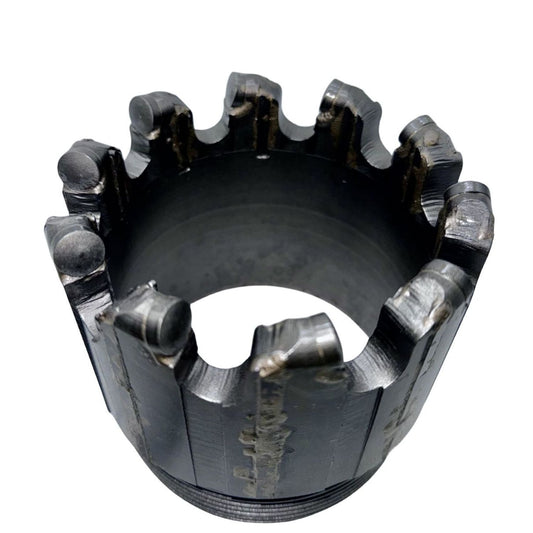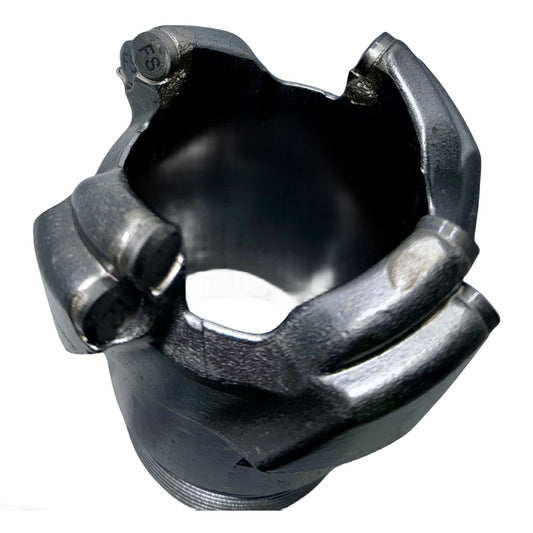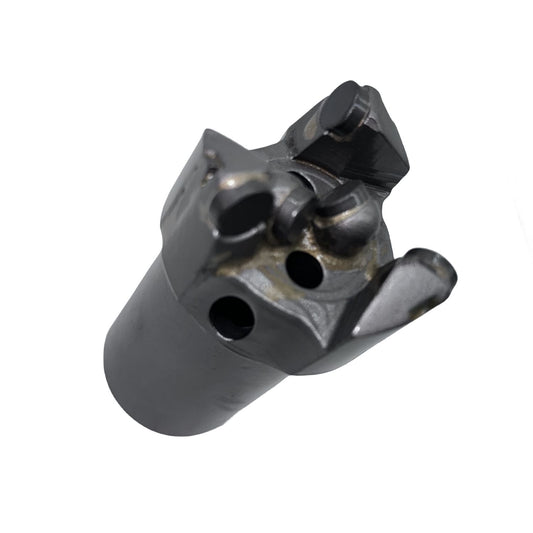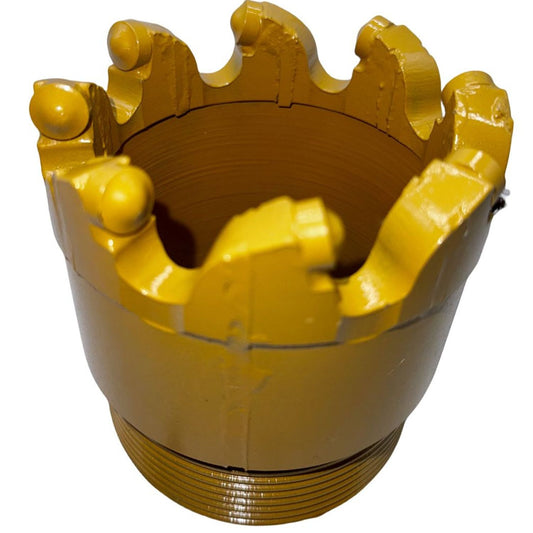Geological Exploration
Drilling Techniques and Drill Bits in Geological Exploration
Geological exploration is one of the most important scientific methods revealing the internal structure, composition, and evolutionary processes of the Earth. A very important field of these technologies is drilling technology. Generally, all types of bits are important, but drill bits are the most principal ones in terms of influencing design and performance, with a direct impact on drilling efficiency, cost, and safety. This paper introduces the drilling technology and drill bits in detail as one of the basic geologic exploration techniques and elaborates on the future development trends.
Keywords: Geologic prospecting; Drilling technology; Bit; Diamond drilling bit; PDC drilling bit; Drilling efficiency; Geological condition.

Drilling Technology in Geological Exploration
1.1 Types of Drilling Technology The following are differences in various technologies with respect to geological exploration:
Rotary technology drilling: Used in the case of hard rock exploration, it consists in the breaking of the layers of rocks with the rotating action of the drill.
Percussion drilling technology: characterizes the impact actions that manage to break soft or loose rock layers; it is often used in shallow exploration. Drilling and blasting technology should be used in areas where the rock conditions are very hard or have some geological complexity. Explosive charges are set in drill holes to break the rock and intensify their noise and vibration levels.
Application of modern technology in directional drilling: Used in the exact location of hidden underground resources or ecological exploration, prescribed paths formed in the subsurface.
1.2 Evaluation Role of Drilling Technology Drilling technology allows gejsondas to form a correct judgment about underground conditions by taking samples of rocks or by testing them in situ from the subsurface environment.
For example, using core samples directly for analysis of geological age, rock type, mineral composition, and stratum structures. Real-time monitoring of the groundwater level, pressure, temperature, and other parameters in the scientific drilling process is prepared for the development of underground resources and environmental protection.
1.3 Process and Stages of Drilling The drilling process in geological exploration generally involves several stages:
Planning Exploration Stage: On the basis of geological data, according to the carried out surface survey, a plan of drilling with indication of location, depth, and technical methods of the sites drilling is done up.
Implementation stage of drilling: This is a slow operation, following the outlines in the plan, during which the well is deepened to the subsoil as rock samples and data from the subsurface are collected at the same time.
Stage of Data Analysis: Laboratory analysis is carried out with respect to the data obtained during the drilling of the core samples in combination with the collected data on subsurface geological conditions. This is then incorporated with the interpretative data gained through drilling in the laboratory analysis in this stage of the geological resources and environmental conditions of the exploration area.

Importance of Drill Bits in Drilling Technology
2.1 Types and Design of Drill Bits Drill bits vary according to the different characteristics of geological materials, including:
The diamond drill bit is made to penetrate materials that are very hard, including hard rocks and granite, since diamonds are extremely hard.
PDC drill bits (Polycrjsonlline Diamond Compact): Suitable for soft to medium-hard rocks, good for limestone, shale, sandstone, etc.
Tri-cone drill bits: Commonly used for soft to medium-hard formations, like mudstone, sandstone, and some softer rocks.
Roller cone drill bits: Suitable for soft formations like clay, coal seams, and soft stone. The drill bit designs, therefore, defer depending on the geological conditions and the needs placed on the drilling. Factors considered in this design include speed of penetration methods to break up the rock and to cool and remove the debris most efficiently.
2.2 Role of Drill Bits in Enhancing Drilling Efficiency and Accuracy
The performance of drill bits directly affects the progress and quality of drilling. An efficient drill bit can:Increase drilling speed by cutting through rock quickly, reducing drilling time.To ensure minimum deviation of boreholes and to stabilize the drilling operation during these processes, in order to arrive at accurate underground information. Maintenance costs are relatively minimized, taking into account that when drill bits are durable, they will be replaced less and need fewer such aspects as additional costs in the maintenance calculation for drilling.
2.3 Impact of Drill Bit Selection on Geological Exploration Results Selection of the right bit in order to achieve the objectives of geological exploration is key; otherwise, wrong bit selection may lead to:
- Bit type unsuitable for drilled rock material.
- Under-representation of Low drilling efficiency, increasing project costs and timelines. Any operating drill bits or their misplacement can introduce bore deviation into place, thus challenging the sample quality and the precision of the geological data as well. Higher chances of damages to equipment, since a wrong-sized drill bit may cause the drill string and/or other drilling equipment to prematurely wear out and become damaged, and thus create a safety hazard.

Integration of Drilling Technology and Drill Bits
3.1 Complementary Role of Drill Bits in Geological Exploration Drill bits are one of the most key elements in drilling technology, construction, and mechanisms of their work. The design and performance are considerably affecting the efficiency and precision of the process. Penetration of rock layers of different hardness with the same drilling bit in a geological investigation had to be offered at the same time with the required sample quality for a geological analysis. These are used widely, like diamond drill bits, due to their super hardness and wear resistance carrying during the process of drilling hard layers. It carries both high working efficiency and low wear characteristics, and it is fit for the continuous drilling operation in many states of the geological process.
3.2 Successful Geological Exploration Case Study In China, for example, a successful case is a large copper mine exploration project, using advanced PDC drill bits and high-performance drilling technology, which achieved significant improvements in drilling speed and sample quality. In actual sense, with the above facts, if it is not efficient drilling, the exploration team could not be in a position to quickly and accurately test the size and distribution of the ore body and finally ascertain a major copper deposit with resources estimated at over 10 million tons.
3.3 Technological Advancements in Drill Bits and Drilling Methods Development of drill bit technology supports the improvement in drilling methods. The growing material science now has also developed new materials for manufacturing the drill bits; this includes synthetic diamonds and enhanced PDC materials to help improve the penetration of the bit and its life.
Furthermore, the optimized design features, including cutting angles and efficiency in debris removal, reduced bit wear and improved drilling efficiency. These have largely assisted in saving the drilling costs and carrying out geological exploration more efficiently and accurately by shortening the length of exploration cycles.

Challenges and Solutions in Geological Drilling
4.1 Common Challenges in Geological Drilling Operations
One of the challenges is in the geological field due to very extreme geological conditions. Bit wears out and requires high accuracy in drilling with an approach of controlling the quality of the sample; some are hard rocks, fault zones with many complexities, high underground pressure, and so on, which will all challenge seriously not only the performance but also the durability of drilling equipment.
4.2 Role of Drill Bits in Overcoming Challenges This is where drill bits come in. The proper selection of certain drill bits under particular geological conditions—like PDC bits for hard layers and tri-cone bits for soft rock or loose formations—can be of much benefit towards increased efficacy of drilling and better quality of samples. In addition, special types of bits are used, including eccentric bits and reaming bits, which can deal with special geological conditions such as fault zones and fractured areas.
4.3 Innovations and Improvements in Drilling Technology Innovations and improvements in technology include automated processes of drilling, real-time monitoring, and data analysis with integrated intelligent drilling solutions, all incorporated in order to increase efficiency and promote safe drilling. All of these technologies ensure the more efficient management of the drilling process, hence lower costs and exploration times, and the reason for such provision is that all of them contribute to the better localization of resources. Conclusion and Future Outlook
5.1 Summary of the Impact of Drilling Technology and Drill Bits on Geological Exploration The technology and the drilling bit that is used should be selected well in geological exploration since they play a very important role in the success of the implementation. It affects not only the drilling efficiency and cost but also the accuracy and reliability of exploration data, which has a big influence on resource evaluation and development decision-making.
5.2 Evolving Role of Drilling Technology in Geological Exploration Technology development is also vastly improving the performances that need to be put up by drilling technologies in geological resource exploration. Advancement with unmanned technologies and remote control systems of the drill itself, the measures of automation and intelligence could surely find ways to enhance the efficiency and safety aspects of this area of geological exploration.
5.3 Future Trends and Potential Advances in Drill Bit Technology The future trend of drill bit technology will be high-performance, long-life, friendly characteristics to the environment, and friendly materials used in the operation, due to advances taking place in material science. More wear-resistance materials will be available for bit formation, while designs will increase the efficiency of drilling. Equally, there should be another kind of drill bit that is environmentally friendly, for instance, a drill bit made from recyclable materials, in line with sustainability.
Exploration Bits Single Rib Double Rib PDC Core Drill Drilling Bit for Mining Coal with enhanced and thickened ball pieces
Water well, geological survey, coal mine PDC core drill bit double rib
alloy steel PDC three-wing concave coreless drill bits,Suitable for grouting holes in water wells, geothermal exploration, coal mines
Exploration Bits Single Rib Double Rib PDC Core Drill Bit for Mining Coal
- Choosing a selection results in a full page refresh.



